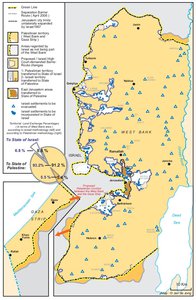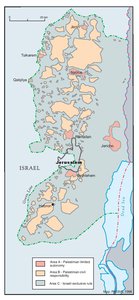INTERIM (OSLO II) AGREEMENT, TABA, 28 SEPTEMBER 1995
Map Details
Following Oslo I, Palestinian-Israeli negotiations over extending the PA’s powers and its presence in the West Bank proceeded on both the official and secret tracks. Israel’s refusal to offer assurances in terms of the eventual target of the Oslo process hardened during this period, as the Palestinians grew increasingly disappointed. Despite the DoP’s timetable, which called for final status talks to commence no later than September 1996, Rabin declared, “no dates are sacred,” and, telling Arafat, “this is your test,” made all further redeployments conditional on the PA’s adoption of an Israeli ‘anti-terror policy’ demanding totalitarian measures. With a new team, including some 30 army officers from settlements, the Israelis presented the Palestinians with a series of potential second-phase maps. Guided by the government’s commitment to the settlement program, the maps were drafted to accommodate the movement of settlers and the growth of settlements, while limiting PA areas to main population centers. During 1995, Israel pursued its settlement strategy to this end, building a network of bypass roads in anticipation of redeployment. By the end of 1995, 400 km of bypass roads were in place, absorbing 16,000 dunums of Palestinian land. The DoP had contained a commitment not to prejudice the outcome of the final status talks through effecting changes on the ground, yet by September 1995, a total of 166,534 dunums had been confiscated since the DoP signing, an average of over 220 dunums per day. Palestinian public opinion in favor of the peace process was in decline, as the Israeli closure of the Gaza Strip forced 28.4% of the labor force out of work - one of the highest rates in the world.As the 1 July target date for Israel’s next withdrawals passed unmet, Palestinian negotiators charged that the Israelis had “turned from occupiers into warders controlling our movements.” The PA’s achievements remained mostly symbolic; the first Palestinian passports and stamps had been issued, plans for an international airport unveiled, and a TV station had begun broadcasting. In mid-August, with the Palestinians refusing to accept the minimal offers made by Israel’s security teams, Israeli chief negotiator Uri Savir summoned the US to, “act as a lever.” Despite their suspicion that the Interim (or Oslo II) Agreement was merely an Israeli ploy to “legitimize the status quo with minute changes on the ground,” the PA was eventually pressed to accept the Israeli map with only minor modifications. Oslo II, signed in Taba on 28 September 1995, divided the West Bank into three ‘zones’ of control. In six West Bank cities (in addition to Jericho) the PA gained civil and internal security control (Area A); in ca. 420 villages the PA was made responsible for civil affairs, while Israel retained security control (Area B); in the remaining territory (Area C) Israel retained its exclusive control. Oslo II postponed redeployment from the city of Hebron, where 450 settlers ‘obliged’ Israel to maintain its military rule over 120,000 Palestinians. In all, Area A amounted to just under 2% of the West Bank, Area B 26% and Area C made up the remaining 72%. Though in the Oslo II Agreement a map was employed and initial redeployments agreed in advance, its three further redeployments, negotiated in the subsequent Wye River and Sharm Esh-Sheikh Agreements were signed in the absence of a map and were based on percentages alone. Israel’s unilateral and unrecognized annexation of East Jerusalem, its exclusion from the area of the West Bank of the territorial waters of the Dead Sea and the 1949-1967 no-man’s land areas reduced the total from which its percentages were calculated by 316 km2, or 5.6% of the actual West Bank. Thus, Israel claimed the Oslo II map gave the Palestinians an Area A amounting to 3% of the West Bank, while the actual total was nearer 2%. The following, percentage-based redeployments were likewise smaller in scale than Israel would claim and than the figures signed upon. The confusion is compounded by the fact that in the Wye and Sharm Esh-Sheikh agreements, the incorrect Israeli figures are integral to official documentation and so are reproduced in most sources, Israeli, Palestinian and international. The PA did not accept this erosion of the total West Bank area but was left with little choice but to defer it to final status talks. In real terms, Israel retained overall security control for the whole OPT and while awarding the PA a tiny fraction of the territory, obliged it to administer nearly the entire population. Further redeployments in the West Bank began on 10 October with the withdrawal from Salfit and were completed by 27 December, when Arafat entered ‘liberated’ Ramallah. Oslo II came six months later than scheduled and left the Palestinians in an “archipelago of enclaves,” ringed by bypass roads and expanding settlements. The agreement also made way for the long-delayed election of an 88-member Palestinian Legislative Council (PLC), on 22 January 1996. Hebron was slated for Israeli partial redeployment within six months and Israel committed itself to further redeployments in three six-monthly installments over 18 months, starting no later than November 1996. These three further redeployments were unspecified in size but together to result in Israel’s total withdrawal from the OPT with the exception of ‘settlement and security’ areas. Among Israel’s numerous violations of the DoP and subsequent agreements was its failure to fulfill its Oslo I commitment to provide the vital “safe passage” between Gaza and the West Bank. Nonetheless, final status talks were scheduled to commence in May 1996 and be concluded by May 1999.
Related Maps
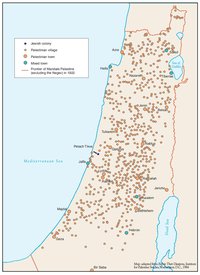
OTTOMAN PALESTINE, 1878
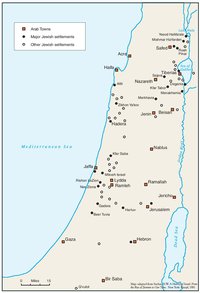
ARAB TOWNS AND JEWISH SETTLEMENTS IN PALESTINE, 1881-1914
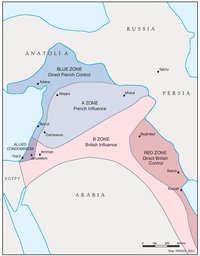
THE SYKES-PICOT AGREEMENT, 1916
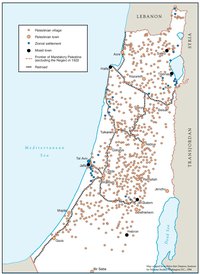
THE BEGINNING OF THE BRITISH MANDATE, 1920
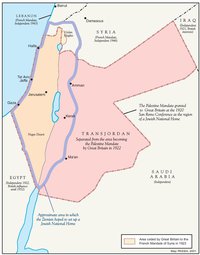
PALESTINE UNDER THE BRITISH MANDATE
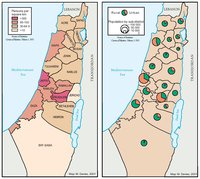
THE DEMOGRAPHY OF PALESTINE, 1931
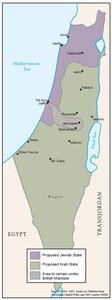
THE PEEL COMMISSION PARTITION PROPOSAL, 1937
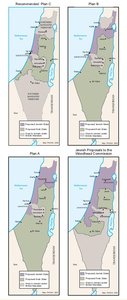
THE WOODHEAD COMMISSION PARTITION PROPOSALS, 1938
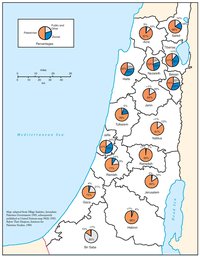
PALESTINIAN AND ZIONIST LANDOWNERSHIP BY SUB-DISTRICT, 1945
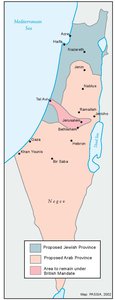
THE MORRISON-GRADY PARTITIONED TRUSTEESHIP PLAN, 1946
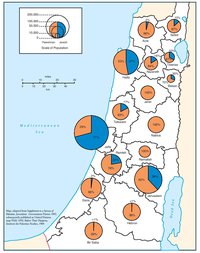
POPULATION OF PALESTINE BY SUB-DISTRICT, 1946
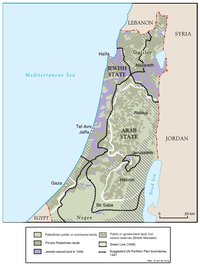
LAND OWNERSHIP IN PALESTINE, 1948
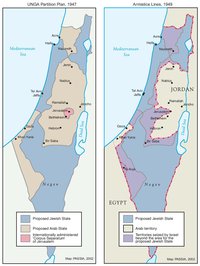
THE UNGA PARTITION PLAN, 1947 – THE 1948 WAR & THE 1949 ARMISTICE LINES
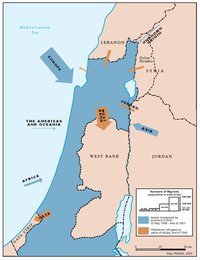
POPULATION MOVEMENTS, 1948-1951
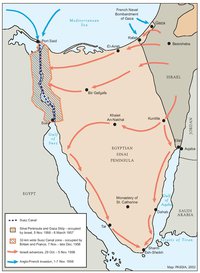
THE SUEZ WAR, 1956
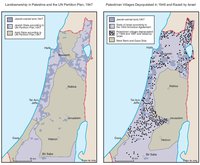
LAND OWNERSHIP IN PALESTINE AND THE UN PARTITION PLAN - PALESTINIAN DEPOPULATED AND DESTROYED VILLAGES, 1948-1949
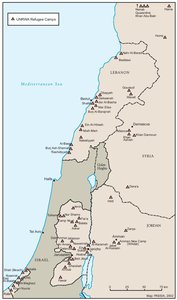
THE PALESTINIAN DIASPORA, 1958
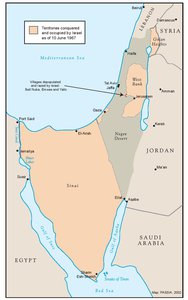
THE NEAR EAST AFTER THE JUNE 1967 WAR
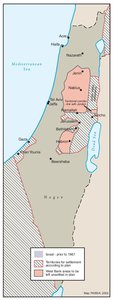
THE ALLON PLAN, JUNE 1967
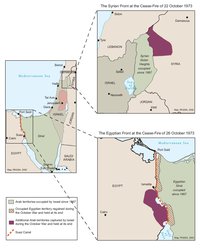
THE OCTOBER WAR, 1973
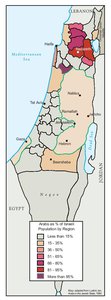
THE PALESTINIANS INSIDE ISRAEL, 1977
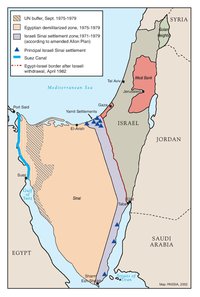
THE CAMP DAVID ACCORDS, 1978-1979
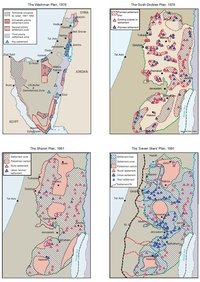
ISRAELI SETTLEMENT MASTER PLANS, 1976-1991
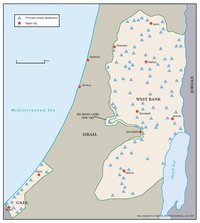
THE 1991 MADRID PEACE CONFERENCE & ISRAELI SETTLEMENTS
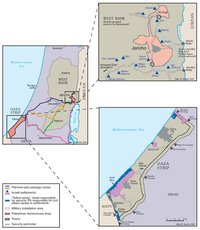
GAZA-JERICHO (OSLO I) AGREEMENT, CAIRO, 4 MAY 1994
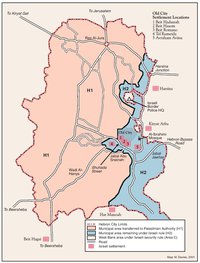
HEBRON PROTOCOL, 15 JANUARY 1997
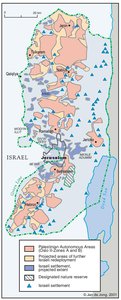
WYE RIVER MEMORANDUM, 23 OCTOBER 1998
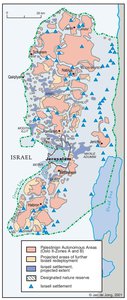
SHARM ESH-SHEIKH AGREEMENT, 4 SEPTEMBER 1999
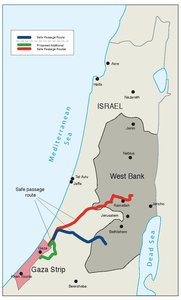
PROTOCOL CONCERNING SAFE PASSAGE BETWEEN THE WEST BANK AND THE GAZA STRIP, 5 OCTOBER 1999
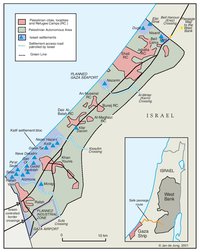
GAZA, 2000
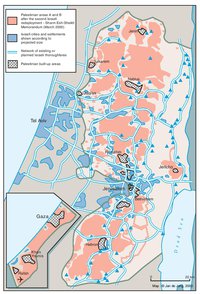
WEST BANK AND GAZA STRIP, MARCH 2000
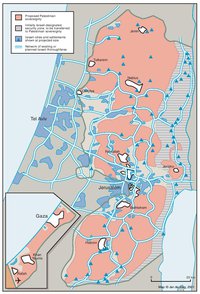
CAMP DAVID PROJECTION, JULY 2000
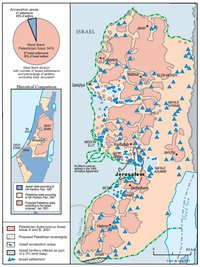
TABA TALKS PROJECTION, JANUARY 2001
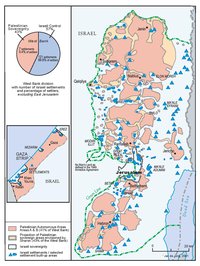
THE SHARON PROPOSAL, SPRING 2001
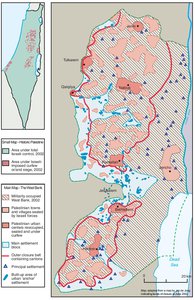
THE REINVASION OF THE PALESTINIAN TERRITORIES, 2001-2002
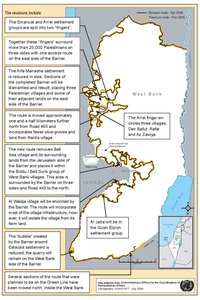
THE ROAD MAP, 2003
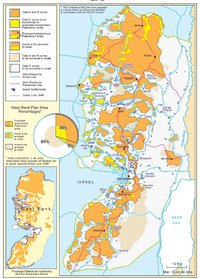
THE GENEVA INITIATIVE AND ACCORD, 2003
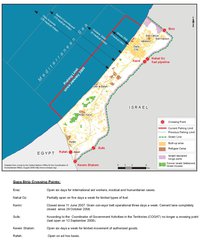
THE ISRAELI DISENGAGEMENT PLAN, 2003-2005
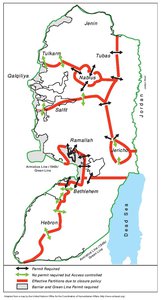
AGREED DOCUMENTS ON MOVEMENT AND ACCESS FROM AND TO GAZA, 2005
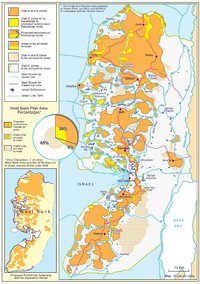
THE SETTLERS' PLAN FOR PALESTINIAN AUTONOMY, 2006
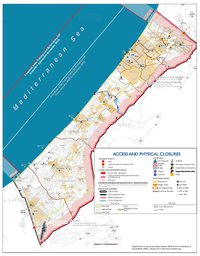
THE GAZA STRIP TODAY (2014)
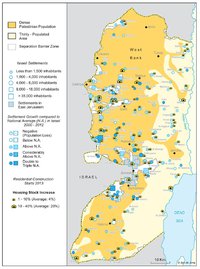
THE WEST BANK TODAY (2014)
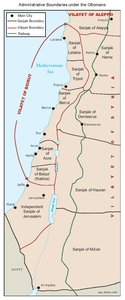
ADMINISTRATIVE BOUNDARIES
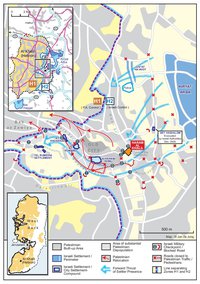
HEBRON
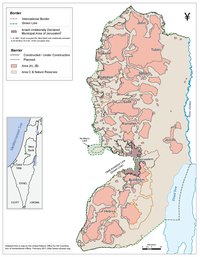
Area C
